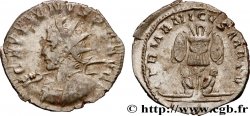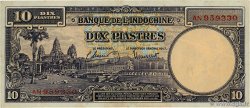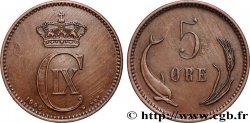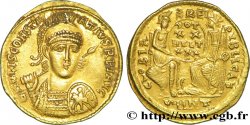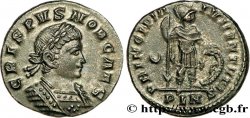v36_0648 - GALLIENUS Antoninien
MONNAIES 36 (2008)
Starting price : 145.00 €
Estimate : 300.00 €
Realised price : 163.00 €
Number of bids : 4
Maximum bid : 421.00 €
Starting price : 145.00 €
Estimate : 300.00 €
Realised price : 163.00 €
Number of bids : 4
Maximum bid : 421.00 €
Type : Antoninien
Date: 257-258
Mint name / Town : Trèves
Metal : billon
Millesimal fineness : 250 ‰
Diameter : 24 mm
Orientation dies : 6 h.
Weight : 3,96 g.
Officine: 2e
Emission: 1re
Coments on the condition:
Exemplaire sur un flan très large, ovale et irrégulier. Très beau portrait de style fin. Revers de style fin, bien venu à la frappe. Magnifique patine grise avec des reflets métalliques
Catalogue references :
Obverse
Obverse legend : GALLIENVS P. F. AVG .
Obverse description : Buste radié et cuirassé de Gallien à gauche, vu de trois quarts en avant avec bouclier et tenant une haste sur l'épaule gauche (F1).
Obverse translation : “Gallienus Pius Felix Augustus”, (Gallien pieux et heureux auguste).
Reverse
Reverse legend : GERMANICVS MAX V.
Reverse description : Trophée d’armes avec un captif de chaque côté.
Reverse translation : “Germanicus Maximus quintum”, (Vainqueur des Germains pour la cinquième fois).
Commentary
Poids lourd. Légende ponctuée. Rubans de type 2 aux extrémités bouletées. Cuirasse lisse. Le bouclier est orné d’une tête de Méduse.
Heavyweight. Punctuated legend. Type 2 ribbons with rounded ends. Smooth cuirass. The shield is decorated with a head of Medusa.
Heavyweight. Punctuated legend. Type 2 ribbons with rounded ends. Smooth cuirass. The shield is decorated with a head of Medusa.







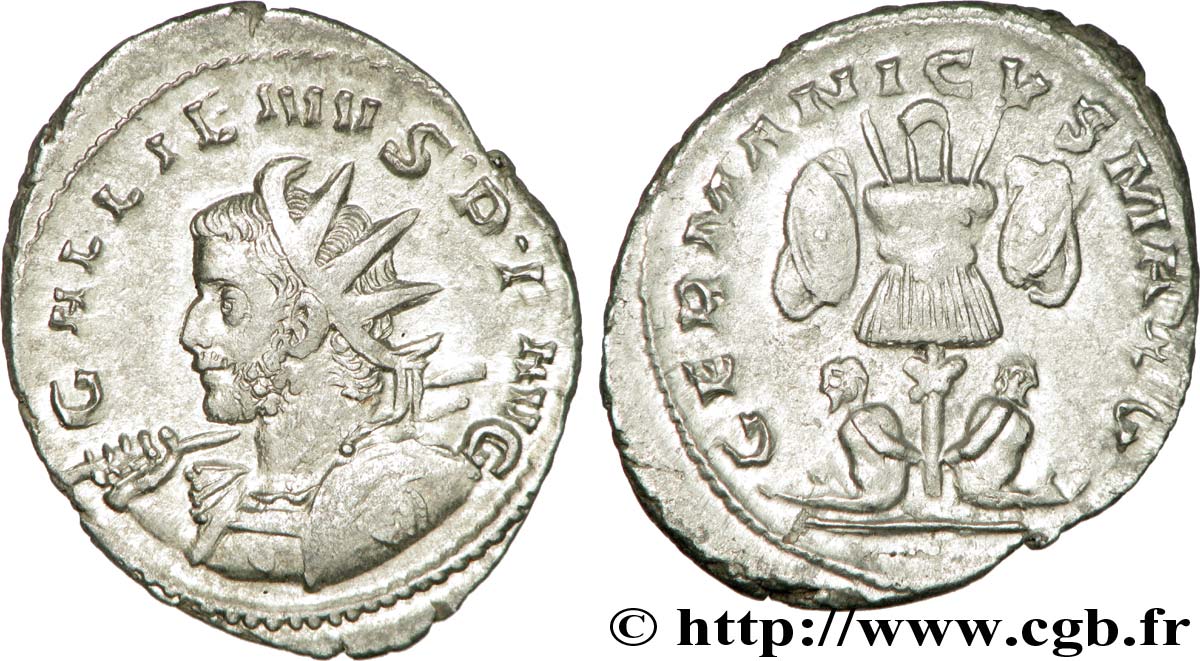
 Report a mistake
Report a mistake Print the page
Print the page Share my selection
Share my selection Ask a question
Ask a question Consign / sell
Consign / sell
 Full data
Full data